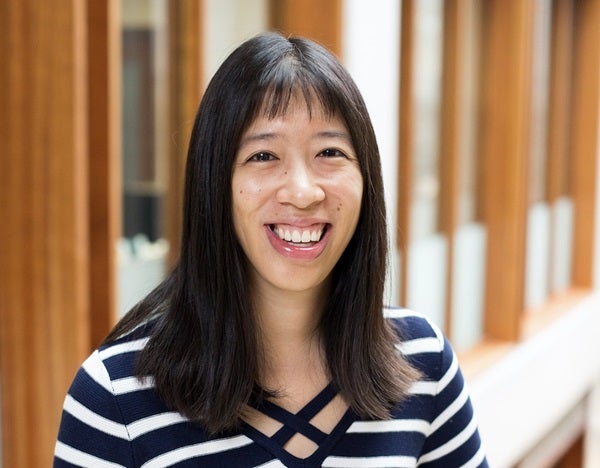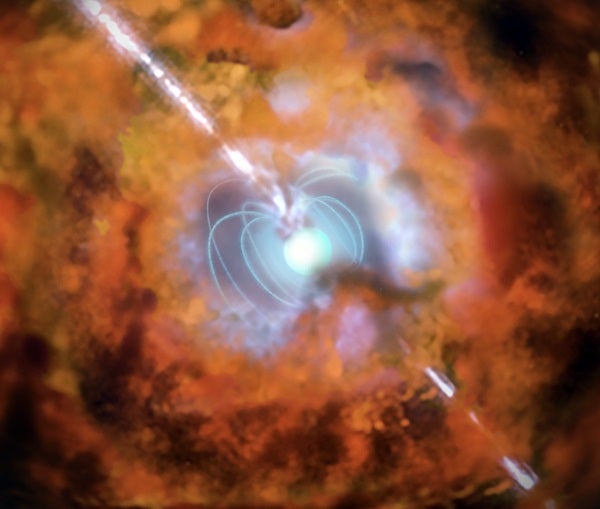Observational astronomer Wen-Fai Fong’s research always starts with fireworks.
“I study explosions in the night sky,” Fong says. “In astronomy, we call them transients.” Fong focuses on two kinds of brilliant transient events that last for just fractions of a second: gamma-ray bursts (GRBs) and fast radio bursts.
When Fong entered the field, GRBs were an enigma — no one knew what caused them. To help solve the mystery, Fong studied the galaxies and environments where GRBs had been seen, searching for clues to what could make such bright, short-lived flashes.
In 2017, the Laser Interferometer Gravitational-wave Observatory (LIGO) detected ripples in space-time passing through Earth just seconds before telescopes saw a GRB. Fong led one of the teams that analyzed the event and determined that GRBs can be caused by a merger of two dense stellar remnants known as neutron stars. Based on this discovery, astronomers now suspect a neutron star merging with a black hole could also produce a GRB, though this theory has yet to be verified.
Today, Fong, 35, works at Northwestern University in Evanston, Illinois, where she’s trying to uncover other clues about transients — like whether neutron star mergers account for most GRBs and what the other sources of these flashes might be. She’s also investigating which elements are produced in the collisions that create GRBs.
“For a long time, people thought supernovae made all of the heavy elements in our universe, including gold, platinum, and silver,” Fong says. “But now we actually think that neutron star mergers might account for a good fraction of [them].”
In addition to her scientific achievements, Fong is known for her mentorship to students and her work to make astronomy more inclusive — particularly for women, who remain underrepresented.
“She’s incredibly humble, brilliant, creative, and transformative,” says Enrico Ramirez-Ruiz, a theoretical astrophysicist and Vera Rubin and Presidential Chair for Diversity in Astronomy at the University of California, Santa Cruz. “When I think about individuals that we need to really move the field forward, I cannot think of anyone better.”
Make sure to explore our full list of 25 rising stars in astronomy. Check back each week for a new profile!
To get the latest astronomical news and observing content delivered directly to your door, subscribe to Astronomy magazine today!











